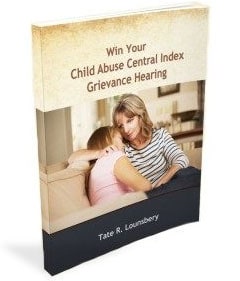Bone Fractures in Child Abuse Cases
When it comes to cases of child abuse with bone fractures, orthopedic surgeons are often consulted to diagnose the difference between accidental and nonaccidental injuries.
The wealth of knowledge possessed by a surgeon is equally as vital when it comes to identifying child abuse as it is in avoiding or beating false accusations.
However, it is not an exact science. Surgeons have to factor in important background information to ensure that they offer up an accurate reading of the situation. This involves an understanding of the context of the child’s injury, as well as the explanations offered by the parents or other people involved.
Here, we offer a brief overview of bone fractures in child abuse cases and the alternative incidents which can sometimes lead to a false accusation of child abuse.
Bone Fractures in Child Abuse CasesIn terms of childhood injuries, fractures are particularly common. Some studies have estimated that around a third of children will experience at least one fracture before their 17th birthday.
Fractures are most commonly experienced by children and the elderly. However, with young children, there may be a question as to whether or not the fracture is a result of accident or abuse.
The first step in identifying a bone fracture in a child is a combination of how the injury is most likely to have happened and is reinforced by radiological data from an X-Ray, survey, or MRI.
In child abuse cases, some studies have illustrated that between 11%-53% of children show evidence of having experienced multiple fractures, most commonly in the long bones of the tibia, femur, and humerus.
How are Children’s Bones Different From Adult Bones?It’s important to understand how children’s bones are composed in order to understand how fractures can occur.
Unlike adult bones, children’s bones are softer and more elastic, with less rigid support around the joints. Due to the composition of their bones, this means that children’s bones fracture in a slightly different way to an adult fracture.
A fracture occurs when too much force is applied to the bone. A bone can only absorb so much force before it breaks. Bones are at their weakest when they’re twisted in some way. They don’t do well with torque. Fractures in children most commonly happen from falls, trauma, or a direct hit to the body.
What are the Different Types of Bone Fractures?In general, surgeons analyze the likelihood of child abuse based on a number of factors, including the type of bone fracture.
Fractures of the skull, ribs, or sternum are of the most concerning to a radiologist or surgeon. In children, fractures of the back ribs are almost always indicative of child abuse, whereas fractures to the front of ribs can be caused by CPR.
Evidence of multiple fractures, or multiple fractures over time, is more likely to indicate that there has been suspected child abuse. Fractures known as “bucket handle” or “corner fractures” are more likely to indicate that child abuse has occurred.
However, this is by no means black and white. There have been cases of suspected child abuse where the child has suffered from brittle bones or genetic bone disorders.
Brittle bone disease in particular can be present in a child even when there is no family history of the disease, which can lead to false allegations of child abuse.
The same can also be said of rickets, a vitamin D deficiency which is more likely to lead to fractures of the developing bones.
How Long Do Bones Take to Heal?Due to the softness of a child’s bones, and the fact that they are still growing, fractures can cause complications for a child as they age.
It also means that it’s possible to estimate the time that a fracture occurred based on the way that it healed.
However, it’s important to note that when it comes to dating a bone fracture, caution should be exercised. Estimates should be given in broad terms rather than narrow time periods.
As each child heals differently, healing time can vary from a few days to a few weeks, which is significant when trying to date when a fracture occurred.
There is presently no gold standard for those in the medical profession to diagnose child abuse or neglect. This means that on its own, a fracture is unlikely to offer conclusive evidence of child abuse.
We have successfully represented clients accused of child abuse after a child in their care was found to have bone fractures. It takes time and attention to get off the CACI after a bone fracture allegation, but we know from our own experiences with our own clients that it can be done.
 Lounsbery Law Office, PC Home
Lounsbery Law Office, PC Home
